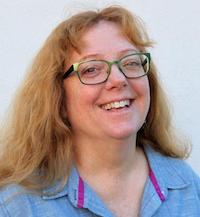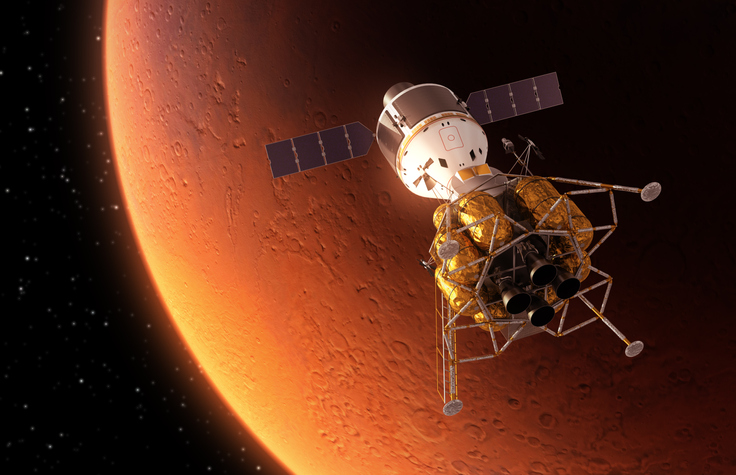3D printers can create objects as large as a building or as small as a voxel (a single point in a 3D space), and print a wide variety of materials or mixtures, making it possible to create increasingly complex objects. But capitalizing on these and future advancements requires new software and new ways of thinking about design. On the leading edge of these advances is Mary Baker, PhD, software designer at HP and active IEEE member.

Mary Baker is well renowned in the IEEE community. She’s a founding member of the IEEE Pervasive Computing editorial board, and her work across mobile systems and applications, IoT privacy, and digital preservation has been both widely consumed and highly regarded.
Until recently, Mary worked as a senior research scientist in HP’s Immersive Experience Lab. Then in 2019, she took her talents to the organization’s 3D Print Software team. We connected with Mary recently to learn more about her career path and what’s she’s working on today. Here’s what she had to say:
What made you interested in computer science, and how have you navigated different opportunities as the field has evolved?
I actually didn’t take a computer science course until my senior year at the University of California, Berkeley. Embarrassingly enough, that was only because my boyfriend at the time was a computer science major and thought I’d enjoy the field. He was right. When an opportunity came to take a computer science course, he suggested I sign up. I took his advice and became completely addicted.
I ended up doing a second senior year just so I could take more computer science courses. Then, after spending a few years at startups, I realized I didn’t know nearly enough. I was surrounded by people who had graduate degrees and vast panoramas of understanding I didn’t have, so I ended up leaving the startup world to get a graduate degree in computer science. After that, it was computer science all the way.
You’ve worked on a range of emerging technologies, like 3D printing, wearables and smart devices. What do you enjoy about these technologies, and what are you most interested in watching in the future?
There are two things. First, the more tangible something is, the more I enjoy it. This was one of the reasons why I was happier writing software than working in pure mathematics – I enjoyed creating a program that did something rather than a set of new ideas or proofs, however important those might be. The results of 3D printing are even more tangible. Second, I love working in an area where technology and people come together. It’s why I enjoyed working on technologies like wearables and physical privacy affordances for smart devices.
What advances are you working on in 3D printing, and what excites you about the future of this technology?
Part of my charter at HP has been to figure out how to use our 3D print technology to print things people haven’t imagined printing or didn’t think it would be possible to print. That’s just plain fun. People are working on so many wonderful advancements for additive manufacturing that it doesn’t make sense to try to list them here, but two that are especially interesting to me are enabled by HP’s Multi Jet Fusion print process. The first is the ability to print different materials at a voxel level – different colors, different levels of conductivity, etc. I believe we’ll see a lot more of this in the future, and I can’t wait since there are so many intriguing things we can do with the capability. The second is scale. We’ve really moved from 3D printing to additive manufacturing, both in terms of the number and distribution of parts being created, as well as the scale of complexity of the parts printed. I’m currently working with parts that involve hundreds of thousands to millions of geometries, and I expect this will only grow over time.
You’ve written that as digital manufacturing progresses and production becomes more attainable, “new classes of pervasive computing systems become feasible.” When do you think this will happen, and what will it take to get there?
My co-author, Oliver Amft of the University of Erlangen-Nurnberg, and I on that guest editors’ introduction might have had slightly different ideas for what that phrase means, but my understanding has to do with how digital manufacturing enables mass customization. Mass customization means you can produce products at an industrial scale, but each one is tailor-made for an individual. One of the tricks for mass customization is to figure out where in the industrial workflow you can most effectively insert custom information. It could be as simple as letting a customer type in the text they want printed on a t-shirt – something we’ve had for ages. But there are so many other kinds of personal or contextual information to respond to. I believe there’s much more sophistication possible, and this will be fascinating to watch in the coming years.
How did you get involved with IEEE and the IEEE Pervasive Computing magazine? What’s the value of your involvement with IEEE?
Ever since graduate school, there have been conferences and workshops I’ve participated in that were sponsored and/or organized by IEEE. The biggest value for me has been the people I’ve connected with, and the work and ideas we’ve shared. Being on the editorial board of the IEEE Pervasive Computing Magazine has been especially rewarding. I got involved when Mahadev Satyanarayanan, professor at Carnegie Mellon University and founding editor-in-chief of the magazine, invited me to the board. The other board members are marvelous to know, and so much of the work submitted is wildly interesting. It’s a great way to stay in touch with a lot of the research happening in pervasive computing, and to help influence the topics we publish.
To learn more about Mary’s work, you can find some her published articles on IEEE Xplore, including work led by a past student that pre-shadowed block chain: “A Historic Name-Trail Service.”





